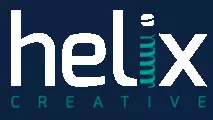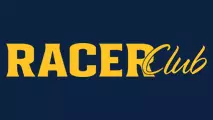Murray State University Athletics

Photo by: Dave Winder-Murray State Athletics
MSU Grad Helps Racer Student-Athletes Improve Sensory Performance
11/3/2022 12:20:00 PM | General
Murray State graduate Chris Andrews recently donated new technology that will assist Racer student-athletes improve their visual sensory abilities
Murray State student-athletes train year around to be the best they can be. In 2022, making gains in strength and conditioning isn't the only way the Racers can improve in their chosen sport.
One area that can be sharpened is sensory performance. For the first time, Racer student-athletes have access to a pathway to improved sensory ability that ultimately controls their sport movement and responsiveness. It's a fact that most of the brain is dedicated to sensory processing. By increasing a person's senses, it can impact the quality of sport performance.
For the second time since 2020, Chris Andrews, president of Bernell Corporation, and 2007 Murray State graduate, has donated ground-breaking technology to the Racers.
"Doctors estimate that up to 80 percent of perceptual input in sports comes from the eyes," Andrews said. "Sadly, for most athletes, vision is an area they give very little attention to. A common misperception is that 20/20 visual acuity means that you have perfect vision. In reality, it just means that you are average. What most people don't realize is that like strength and conditioning, visual skills can also be trained."
Originally developed by Nike, the Senaptec Sensory Station is the world's only complete sensory performance assessment and training solution with comprehensive cloud-based data and analytics. One of the key features is the program's ability to compare assessment results against more than 50,000 athletes across dozens of sports worldwide. With this information, an athlete's visual and sensorimotor skills can be specifically measured against other athletes at their sport, position, and level to learn their strengths and weaknesses based on their peers. They can even measure themselves against other positions inside their sport, or against higher levels, such as professional athletes. Once they understand how they compare to other athletes, they can then focus on training their specific deficiencies.
"Just like how we improve our intellect by absorbing new information into our brains, we can train our brain through visual exercises to make it more efficient. An athlete can improve anticipation, reaction, balance and many other skills," Andrews added. "Strong visual skills are often part of the "intangible" skill set that elite athletes have, which helps them rise to the top of their sports and outperform their peers."
At this time, there are 15 training modules with more being added frequently.
Senaptec Sensory Station – Training Modules
"My wife, Vanessa and I are proud to be alumni of Murray State University," Andrews said. "Murray will always hold a special place in our hearts and we are very fortunate to be in a position today where we can give back to the university. I hope this system will not only help our student-athletes to advance their visual skills, but to also catch visual issues which often go undetected, yet, once discovered can be trained and lead to dramatic improvements both in the sport and in the classroom. The donation of this system would not have been possible without the support and generosity of the leadership team at Senaptec, primarily CEO Joe Bingold and National Sales Director, Dr. Jeff Klosterman. Dr. Klosterman was instrumental in this process and has generously donated his time to assist in training the staff at Murray and is committed to ensuring that we take full advantage of the system and its capabilities. I would also like to thank Dr. Canaan Montgomery of West End Eye Care in Paducah, who assisted with the onsite training and setup of the system for the athletic training staff and has offered his services as a sports vision adviser to the athletic department."
One area that can be sharpened is sensory performance. For the first time, Racer student-athletes have access to a pathway to improved sensory ability that ultimately controls their sport movement and responsiveness. It's a fact that most of the brain is dedicated to sensory processing. By increasing a person's senses, it can impact the quality of sport performance.
For the second time since 2020, Chris Andrews, president of Bernell Corporation, and 2007 Murray State graduate, has donated ground-breaking technology to the Racers.
"Doctors estimate that up to 80 percent of perceptual input in sports comes from the eyes," Andrews said. "Sadly, for most athletes, vision is an area they give very little attention to. A common misperception is that 20/20 visual acuity means that you have perfect vision. In reality, it just means that you are average. What most people don't realize is that like strength and conditioning, visual skills can also be trained."
Originally developed by Nike, the Senaptec Sensory Station is the world's only complete sensory performance assessment and training solution with comprehensive cloud-based data and analytics. One of the key features is the program's ability to compare assessment results against more than 50,000 athletes across dozens of sports worldwide. With this information, an athlete's visual and sensorimotor skills can be specifically measured against other athletes at their sport, position, and level to learn their strengths and weaknesses based on their peers. They can even measure themselves against other positions inside their sport, or against higher levels, such as professional athletes. Once they understand how they compare to other athletes, they can then focus on training their specific deficiencies.
"Just like how we improve our intellect by absorbing new information into our brains, we can train our brain through visual exercises to make it more efficient. An athlete can improve anticipation, reaction, balance and many other skills," Andrews added. "Strong visual skills are often part of the "intangible" skill set that elite athletes have, which helps them rise to the top of their sports and outperform their peers."
At this time, there are 15 training modules with more being added frequently.
Senaptec Sensory Station – Training Modules
- Eye-Hand Coordination - Find and touch targets quickly and accurately.
- Go or No-Go - Requires quick decision making and swift movement.
- Dynamic Vision - Peripheral vision awareness and rapid eye movement.
- Perception Training - Brain data collection and memory.
- Response Inhibition - Rapid decision-making and muscle response.
- Spatial Memory – Improve memory skills.
- Spatial Sequence – Sequential memory training.
- Multiple Object Tracking - Avoid collisions with multiple objects that are moving around the screen.
- Depth Perception – Make judgments of depth.
- Near Far Shift - Train eye muscles to rapidly shift focus and recognize details.
- Visual Search - Search and find tasks are critical for navigating most sport and real-world activities.
- Tempo - Training audio/visual correlation and anticipation timing.
- Shape Cancellation - Assessment for visual neglect issues.
- Visual-Motor Integration - Training neuromotor skills.
- Split Attention - Combining a central cognitive task with a peripheral motor task.
"My wife, Vanessa and I are proud to be alumni of Murray State University," Andrews said. "Murray will always hold a special place in our hearts and we are very fortunate to be in a position today where we can give back to the university. I hope this system will not only help our student-athletes to advance their visual skills, but to also catch visual issues which often go undetected, yet, once discovered can be trained and lead to dramatic improvements both in the sport and in the classroom. The donation of this system would not have been possible without the support and generosity of the leadership team at Senaptec, primarily CEO Joe Bingold and National Sales Director, Dr. Jeff Klosterman. Dr. Klosterman was instrumental in this process and has generously donated his time to assist in training the staff at Murray and is committed to ensuring that we take full advantage of the system and its capabilities. I would also like to thank Dr. Canaan Montgomery of West End Eye Care in Paducah, who assisted with the onsite training and setup of the system for the athletic training staff and has offered his services as a sports vision adviser to the athletic department."
Mason Miller & Dylan Anderson | Racer Mens Basketball | 10/27 Press Conference
Monday, October 27
Head Coach Ryan Miller | Racer Mens Basketball | 10/27 Press Conference
Monday, October 27
Head Coach Ryan Miller | Racer Basketball Post Game Press Conference | 10/26/25
Monday, October 27
Javon Jackson | Racer Basketball Post Game Press Conference | 10/26/25
Monday, October 27







